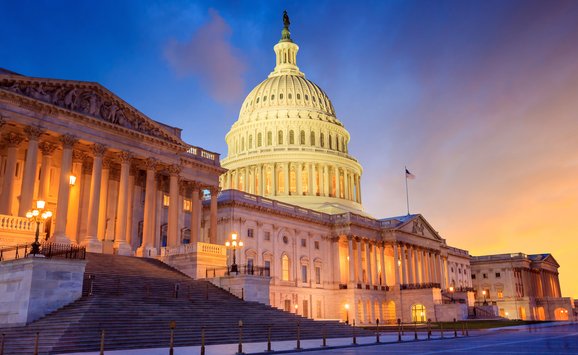In 1970 the state of Vermont enacted a bill imposing effluent charges. This was the first time that greater use of economic incentives—advocated for many years by economists as tools of pollution control policy—became embodied in legislation. The growing interest in effluent charges and other forms of economic incentives shown by legislators and other officials coincides with growing concern over pollution and with documentation of the inadequacy of present control policies. Formal and informal studies of the applicability of the principle in different circumstances are being carried out at both federal and state levels.
Senator William Proxmire introduced a bill (S-3181) which would have the Secretary of Interior "establish. . . a schedule of national effluent charges for all those substances other than domestic sewage which detract from the quality of the water. . . ." The Secretary of Interior would be given broad discretionary power to determine what substances (organic matter, suspended solids, heavy metals, etc.) to place charges on, and the levels of the charges to be imposed, provided only that he take into account ". . . the quantity and quality of the waste discharged and the resulting damage to the quality of the waterway. . . ." Hearings were held on the Proxmire bill by Senator Muskie's Subcommittee on Air and Water Pollution in May 1970, but the measure got no further in the 91st Congress.
The Administration's stand on effluent charges has been cautious. However, the "1970 Report of the Council on Environmental Quality" hints at a more favorable official stance. "If there were a way," the report states, "to make the price structure shoulder these external costs [of pollution]—taxing the firm for the amount of discharge, for instance—then the price for the goods and services produced would reflect these costs." The council also recommends that "new financial incentives, such as effluent charges" be made part of a demonstration of the most advanced concepts of water quality management in a model river basin. And in its concluding chapter, the report judges that "Economic incentives have won increasing support as a pollution control weapon. . . . The charge system, some say, would not only be more economic but also more effective compared to the traditionally cumbersome enforcement process. . . . The Council believes that economic incentives offer promise, especially if backed up by regulatory power."
The new Vermont law uses economic incentives to accelerate compliance with the provisions of state-issued waste discharge licenses. The act imposes effluent charges, beginning in July 1971, on all those firms which had not completed the installation of the pollution control facilities required by the terms of their licenses. Once firms were in compliance with their licenses, the charges and the economic incentives for continued effective operation of the facilities would cease.
In Maine the state's Water Resources Center at the University of Maine has funded a study of the legal aspects of effluent charges for water pollution control. One purpose of the study is to prepare comprehensive effluent charge legislation which will be introduced to the Legislature convening in January 1971. Also in Maine a citizen's committee has drafted effluent charge legislation and is circulating initiative petitions which, if enough signatures are obtained, would have the effect of forcing a referendum on the issue.
Wisconsin approached the problem much earlier but in a more cautious manner. In 1965 the Wisconsin Legislature authorized a study of the feasibility of effluent charges for that state. The study is being conducted by the Water Resources Center of the University of Wisconsin. Some of the findings have been published and other phases of the study are still in progress.
In the air pollution field, economists and administrators reversed their roles: there was relatively little discussion by economists of the use of economic incentives, but the federal Administration introduced legislation to employ incentives in the battle against automotive emissions. In July 1970 the Administration asked Congress to levy a tax on the sale of lead additives for gasoline as a means of controlling lead particle emissions and to reduce other automotive emissions whose effective control is impeded by the presence of lead in gasoline. The tax would be collected on the sale of lead to the producers of gasoline and would serve to raise the price of leaded fuels relative to lead-free gasolines. The proposal met with unanimous opposition of oil refiners and marketers in the September Hearings before the House Ways and Means Committee, and advanced no farther.
To be effective, economic incentives must be linked as directly as possible to the pollutant to be controlled. Thus, other things being equal, a tax on the quantities of air pollutants actually emitted by a car would be more effective than a tax on lead, and a lead tax more effective than a tax on engine displacement—a measure that also had its proponents during the year but made no headway. To achieve efficient control at the point of emission without sacrificing administrative feasibility will become an increasingly important objective of environmental policy.





